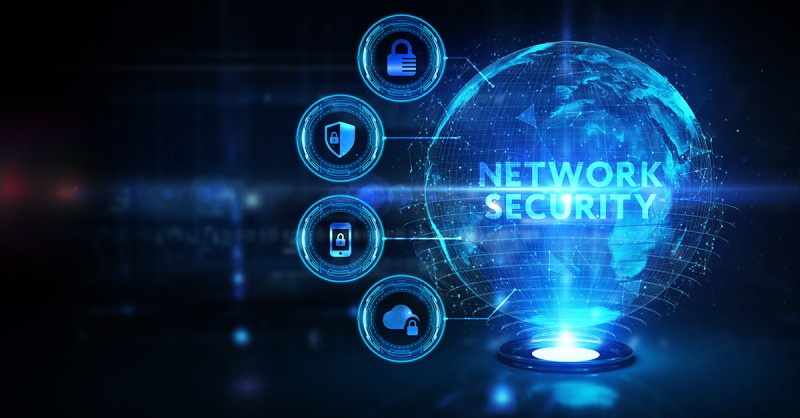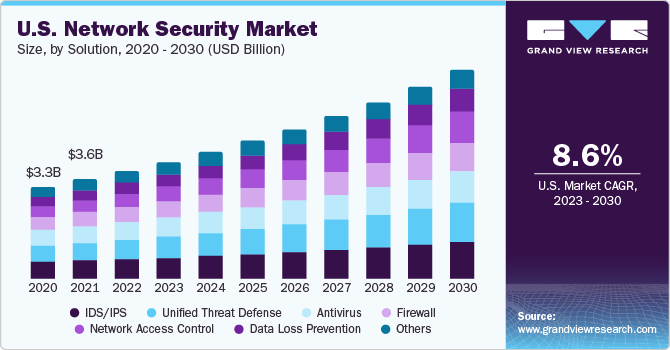FFT Pipeline Protection: Advanced Technologies to Safeguard Your Pipeline Infrastructure
FFT Pipeline Protection: Advanced Technologies to Safeguard Your Pipeline Infrastructure
Blog Article
The Vital Duty of Data and Network Security in Safeguarding Your Info
In a period where information breaches and cyber hazards are significantly prevalent, the relevance of durable data and network protection can not be overemphasized. The implementation of reliable safety steps, such as security and gain access to controls, is critical to keeping depend on and operational stability.
Understanding Information Safety And Security
In today's digital landscape, an overwhelming majority of companies grapple with the intricacies of information security. This critical element of information innovation involves shielding sensitive information from unauthorized accessibility, corruption, or burglary throughout its lifecycle. Data safety encompasses different approaches and innovations, including encryption, gain access to controls, and data masking, all targeted at securing details against breaches and susceptabilities.
A fundamental facet of data safety and security is the recognition and category of data based on its level of sensitivity and relevance. This classification assists companies prioritize their safety and security initiatives, alloting resources to safeguard the most essential information efficiently. Executing durable plans and procedures is important to make sure that workers comprehend their duty in keeping information protection.
Routine audits and analyses help in determining prospective weaknesses within an organization's data safety and security framework. Additionally, worker training is crucial, as human error remains a considerable consider information breaches. By fostering a culture of security awareness, companies can mitigate dangers related to expert dangers and carelessness.
Relevance of Network Safety
Network safety stands as a foundation of an organization's overall cybersecurity strategy, with about 90% of organizations experiencing some type of cyber risk in the last few years. The relevance of network safety depends on its capacity to shield sensitive information and keep the stability of business procedures. By protecting network infrastructures, organizations can protect against unauthorized accessibility, data violations, and various other destructive tasks that might threaten their assets and credibility.
Implementing durable network safety and security measures not just helps in mitigating dangers but additionally fosters trust fund among stakeholders and clients. When clients are assured that their individual and financial information is safe and secure, they are more probable to engage with the company, resulting in improved customer loyalty and organization growth.
Additionally, a well-structured network security framework promotes compliance with various regulatory requirements. Organizations needs to comply with industry requirements and lawful mandates concerning data security, and reliable network safety and security methods can ensure compliance, consequently staying clear of potential penalties.

Typical Cyber Threats
Organizations have to stay watchful versus a range of cyber threats that can threaten their network safety and security efforts. Amongst one of the most typical risks is malware, which incorporates viruses, worms, and ransomware that can interfere with operations, steal data, or hold details hostage. Phishing assaults, where destructive actors pose trusted entities to trick individuals into disclosing sensitive details, continue to expand in sophistication, making user education and learning essential.
An additional prevalent hazard is distributed denial-of-service (DDoS) assaults, which overload systems with website traffic, rendering them inaccessible to legitimate individuals. Expert risks, whether accidental or deliberate, posture significant dangers as staff members may unintentionally reveal sensitive data or purposefully exploit their gain access to for harmful objectives.
Additionally, vulnerabilities in software application and equipment can be manipulated by cybercriminals, highlighting the importance of routine updates and patch monitoring. Social engineering methods further complicate the landscape, as attackers manipulate individuals into revealing secret information via mental manipulation.
As these threats advance, companies need to keep a positive strategy to determine, reduce, and respond effectively to the ever-changing cyber threat landscape, guarding their valuable information and maintaining count on with stakeholders. fft pipeline protection.
Best Practices for Protection
Implementing durable security measures is vital for safeguarding delicate details and preserving operational integrity. Organizations should begin by performing thorough threat analyses to determine vulnerabilities within their systems. This proactive approach makes it possible for the prioritization of safety efforts tailored to the specific demands of the organization.
Adopting solid password plans is necessary; passwords must be complex, frequently changed, and took care of utilizing secure password monitoring tools. Multi-factor verification (MFA) adds an extra layer of protection by needing additional confirmation techniques, hence minimizing the risk of unapproved access.
Routine software updates and spot management are critical to secure against understood susceptabilities. Executing firewall check it out programs and invasion discovery systems can better secure networks from external dangers. Employee training is just as vital; staff ought to be educated on recognizing phishing attempts and recognizing the significance of information security procedures.
Information security should be employed for sensitive info, both at rest and in transportation, to make certain that also if information is obstructed, it remains inaccessible (fft pipeline protection). Companies must develop and routinely test incident response plans to ensure speedy activity in the occasion of a safety breach. By adhering to these best methods, organizations can improve their safety and security position and safeguard their vital data assets
Future Trends in Safety And Security
The landscape of data and network protection is consistently progressing, driven by improvements in innovation and the enhancing elegance of cyber threats. As companies significantly embrace cloud computing and IoT devices, the standard of safety will change towards a zero-trust model. This approach highlights that no special info entity-- inner or exterior-- is naturally trusted, mandating verification at every accessibility point.
Furthermore, the use of artificial knowledge and device discovering in safety protocols gets on the rise. These innovations enable anticipating analytics, allowing companies to identify susceptabilities and potential dangers before they can be made use of. Automation will likely play a pivotal function in streamlining safety responses, minimizing the moment taken to alleviate breaches.
Furthermore, governing frameworks will certainly continue to tighten, demanding a lot more stringent compliance actions. Organizations should remain abreast of evolving policies to guarantee they fulfill safety and security requirements.

Final Thought
In conclusion, the value of data and network protection can not be overemphasized in the modern electronic landscape. With the occurrence of cyber risks and the enhancing intricacy of governing needs, companies should embrace thorough safety and security measures to secure delicate info. By executing reliable strategies and remaining educated about arising trends, services can enhance their durability versus potential assaults, ensuring information honesty and fostering depend on among clients and stakeholders. Prioritizing safety continues to be vital for functional connection and long-term success.
In a period where data violations and cyber risks are progressively widespread, the relevance of durable information and network security can not be overemphasized. Data safety encompasses different methods and modern technologies, including encryption, access controls, and data masking, all aimed at protecting information against breaches and vulnerabilities.
A fundamental aspect of data security is the identification and classification of information based on its sensitivity and importance.The landscape of data and network security is continually evolving, driven by developments in technology and the increasing sophistication of cyber hazards.In verdict, the relevance of information index and network safety and security can not be overstated in the contemporary electronic landscape.
Report this page